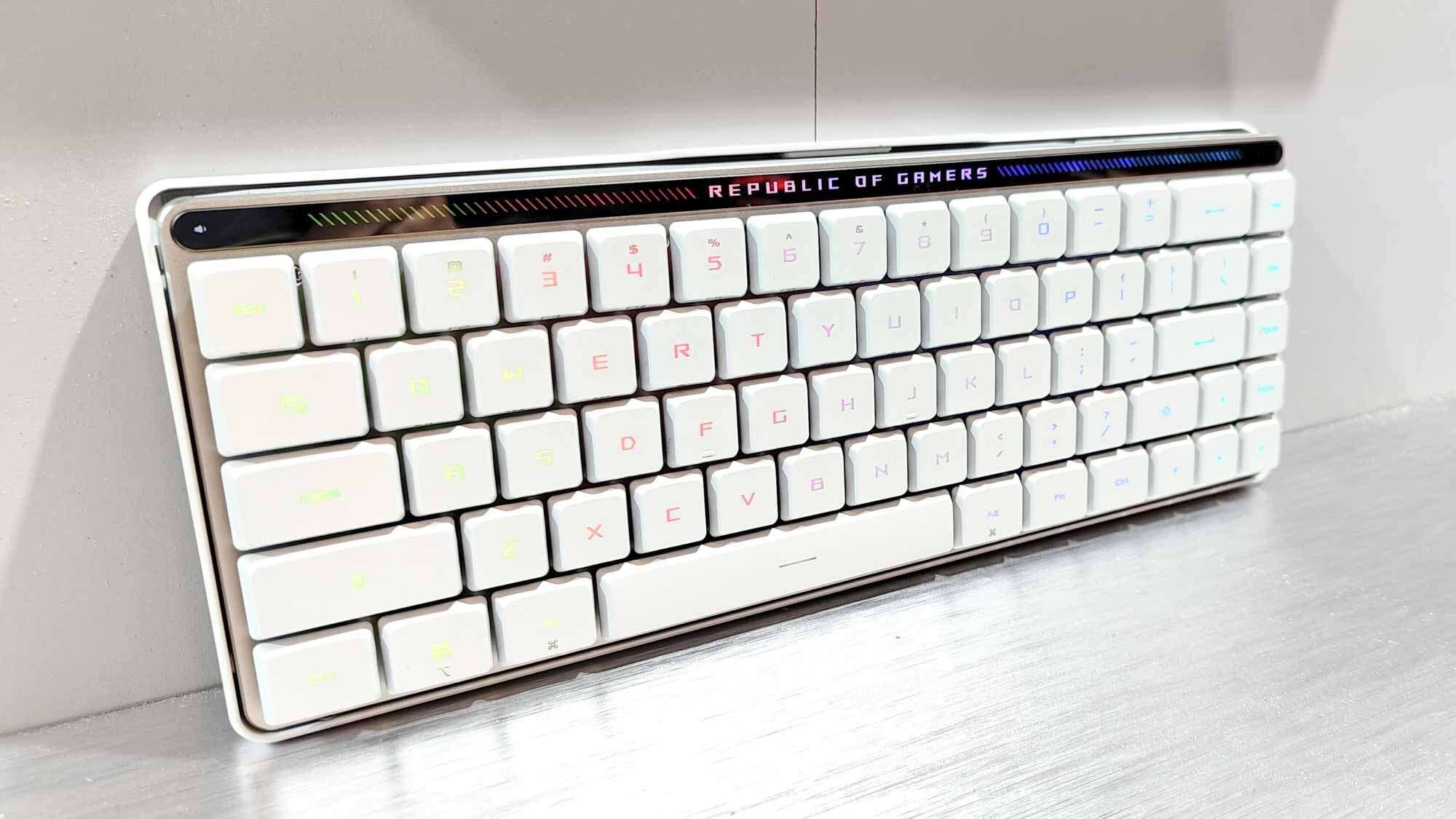
From Skeptic to Convert: My Unexpected Journey with the Asus Low-Profile Keyboard
I’ve always been a staunch advocate for high-profile keyboards. The tactile feedback, the substantial key travel, the satisfying *thunk* with each keystroke—these were the hallmarks of a keyboard experience I cherished. My fingers danced across those towering keycaps with a familiarity and comfort built over years of dedicated typing. Low-profile keyboards, in my mind, were relegated to the realm of laptops and space-saving solutions, lacking the depth and responsiveness I demanded. However, Asus’ latest offering has completely shattered my preconceived notions, forcing me to reconsider everything I thought I knew about keyboard design.
A Reluctant Beginning
My initial reaction to the Asus low-profile keyboard was, admittedly, one of skepticism. The sleek, minimalist design was aesthetically pleasing, but I couldn’t shake the feeling that I was sacrificing performance for form. The keys sat almost flush with the board, a far cry from the elevated platforms I was accustomed to. I approached it with a sense of obligation rather than excitement, prepared to be disappointed by the shallow key travel and lackluster feedback.
The First Touch: A Surprising Revelation
The moment my fingers made contact with the keys, my expectations began to shift. The keys, despite their low profile, possessed a surprising amount of tactile feedback. It wasn’t the same deep, resonant *thunk* of a mechanical keyboard, but rather a precise, responsive click that felt remarkably satisfying. The key travel, while shorter, was still substantial enough to provide a sense of engagement. I found myself typing with a speed and accuracy I hadn’t anticipated.
The Asus Difference: Engineering Excellence
What sets Asus’ low-profile keyboard apart is its meticulous attention to detail. It’s clear that the company didn’t simply shrink down a traditional keyboard design; they reimagined the entire typing experience. The keycaps are crafted from high-quality materials that feel both durable and comfortable. The switches are meticulously engineered to provide the perfect balance of responsiveness and tactility. The overall build quality exudes a sense of premium craftsmanship.
Key Features That Stood Out
- Ergonomic Design: The keyboard is designed with ergonomics in mind, promoting a natural and comfortable typing posture.
- Customizable Backlighting: The per-key RGB backlighting allows for complete customization, adding a touch of personality to your setup.
- Durable Construction: The keyboard is built to last, with a robust frame and high-quality components.
- Responsive Switches: The low-profile switches offer a surprisingly satisfying typing experience.
- Compact Form Factor: The compact design saves valuable desk space without sacrificing functionality.
Beyond the Initial Impression: Long-Term Use
The initial novelty of the keyboard eventually faded, replaced by a genuine appreciation for its performance. I began using it for extended periods, both for work and leisure. I found that the low-profile design actually reduced strain on my wrists and fingers, allowing me to type for longer without fatigue. The quiet operation of the keyboard was also a welcome change, creating a more peaceful and focused work environment.
The Benefits of Low-Profile: A Convert’s Perspective
Prior to this experience, I had dismissed low-profile keyboards as inferior alternatives. However, after spending considerable time with the Asus keyboard, I’ve come to realize that they offer several distinct advantages.
- Reduced Strain: The shorter key travel and lower profile can reduce strain on wrists and fingers.
- Faster Typing: Some users find that they can type faster on low-profile keyboards due to the reduced distance the keys need to travel.
- Quieter Operation: Low-profile keyboards tend to be quieter than traditional mechanical keyboards.
- Sleek Design: The minimalist design of low-profile keyboards can be more aesthetically pleasing than bulkier alternatives.
- Portability: Their slim profile makes them ideal for travel and on-the-go use.
The Specifics: A Deep Dive into the Asus Model
While I’ve generalized about the benefits of low-profile keyboards, it’s important to highlight the specific aspects of the Asus model that contributed to my conversion. The particular model I tested featured Asus’ proprietary low-profile switches, which are designed to mimic the feel of mechanical switches while maintaining a slim profile. The actuation point was precise and responsive, providing a satisfying click with each keystroke. The keycaps were made from a durable PBT material that felt smooth and comfortable to the touch. The keyboard also featured a full suite of multimedia controls, allowing me to easily adjust volume, skip tracks, and access other functions without interrupting my workflow.
Customization and Features: Tailoring the Experience
Beyond the core typing experience, the Asus keyboard offered a wealth of customization options. The per-key RGB backlighting allowed me to create custom lighting profiles that matched my mood or the game I was playing. The keyboard also supported macro recording, allowing me to automate complex tasks with a single keystroke. The included software was intuitive and easy to use, making it simple to customize the keyboard to my exact preferences.
The Verdict: A Changed Perspective
I went into this experience expecting to be disappointed, prepared to reaffirm my bias against low-profile keyboards. Instead, I emerged with a newfound appreciation for their potential. The Asus keyboard challenged my preconceived notions and forced me to reconsider what I look for in a keyboard. While I still appreciate the tactile feedback and substantial key travel of traditional mechanical keyboards, I can no longer dismiss low-profile alternatives as inferior. The Asus keyboard has proven that it’s possible to achieve a satisfying and productive typing experience in a slim and stylish package.
The Asus low-profile keyboard is not just a good keyboard; it’s a testament to innovative design and engineering excellence. It successfully bridges the gap between form and function, offering a typing experience that is both comfortable and efficient. My initial skepticism has been replaced by genuine admiration. This keyboard has earned a permanent place on my desk. I now understand the allure of low-profile keyboards, and I’m eager to explore what other innovations the future holds.



